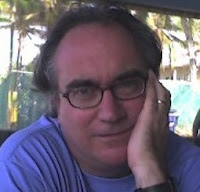I was looking over the list of past winners of the Nobel Prize, looking for someone with whom I was not familiar, and sure enough there was Patrick White, winner in 1973, and an Australian no less. So I got a copy of his 1973 novel The Eye of the Storm and put it in the Stack. I had no idea what to expect, maybe a mental image of Russell Crowe brandishing a cutlass on the deck of a frigate.
But White's work is nothing like that. His terrain is the nature of consciousness, a subject that he approaches in a most painterly way, working always on a presentation of people's thoughts and impressions that he does indeed do outstandingly well. This is not so much about precision as it is about creativity, although his ability to inhabit multiple and disparate characters does require a very fine eye and ear. It struck me that he chose an unpromising subject, that of an elderly woman in the last days of her life and the people around her, her three nurses, her housekeeper, her solicitor, and her two adult children. Painterly, as I said: this is a rendering of a scene, the elements of which are the interior lives of the people in it. It is not "social commentary" but it is "personal commentary" if you will, critical of humanity but at a very personal level, like a caricaturist, Hogarth or Goya, say.
Elizabeth Hunter was the beautiful, cruel, promiscuous wife of a rich and famous man, the star of a thousand boozy parties, the seductress of politicians, artists, and friends' husbands. Now in her eighties she lies invalid and blind in her big house, lording over her staff of nurses who tend to her round the clock. The reader is not put into the mind of Elizabeth Hunter, but rather into the minds of those around her, particularly her two children, Basil, a successful stage actor in England, and Dorothy, the divorced wife of a French nobleman who now lives on her own in not-rich circumstances in Paris, and Flora Manhood, the young and pretty nurse from the wrong side of the tracks.
The focus is microscopic: how someone feels walking up a flagstone path, what one thinks of encountering old colleagues in a bar, how one reacts to someone else's apparently predatory children, the effect of the smell of porkchops on entering an estranged boyfriend's apartment. The language reels out into impressionistic passages and then coils back into precision, like jazz music leaving and returning to the beat, the narration passing from one mind to another but never into omniscience.
It is a big novel, 589 pages, but length here is equivalent to a big canvas and little more. He has quite a few other novels, from reading about them I think I'll get around to The Twyborn Affair (1979), which was shortlisted for the Booker before, so the story goes, White withdrew it to make way for younger writers. He has several novels set in the Australian outback which would be more up my usual alley, The Tree of Man (1956) was a breakthrough novel for him and Voss (1957) sounds like it might be a fun Herzogian (as in Werner) trek to madness and oblivion (and what could be funner than that?).
It's a tribute to White's originality that there are no obvious comparisons, at least that occur to me, among his contemporaries. Obviously he is impossible without Modernism, Freud, Henry James, Faulkner, etc. I'm glad to have discovered him - lists are good!
Subscribe to:
Post Comments (Atom)



























No comments:
Post a Comment